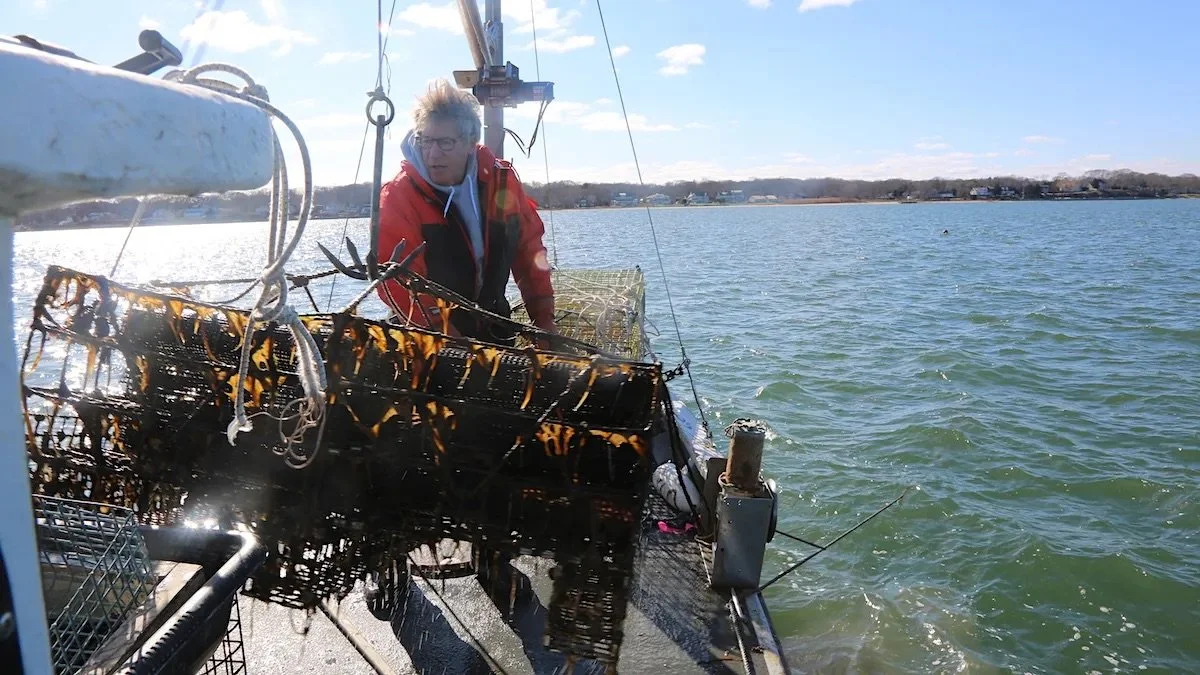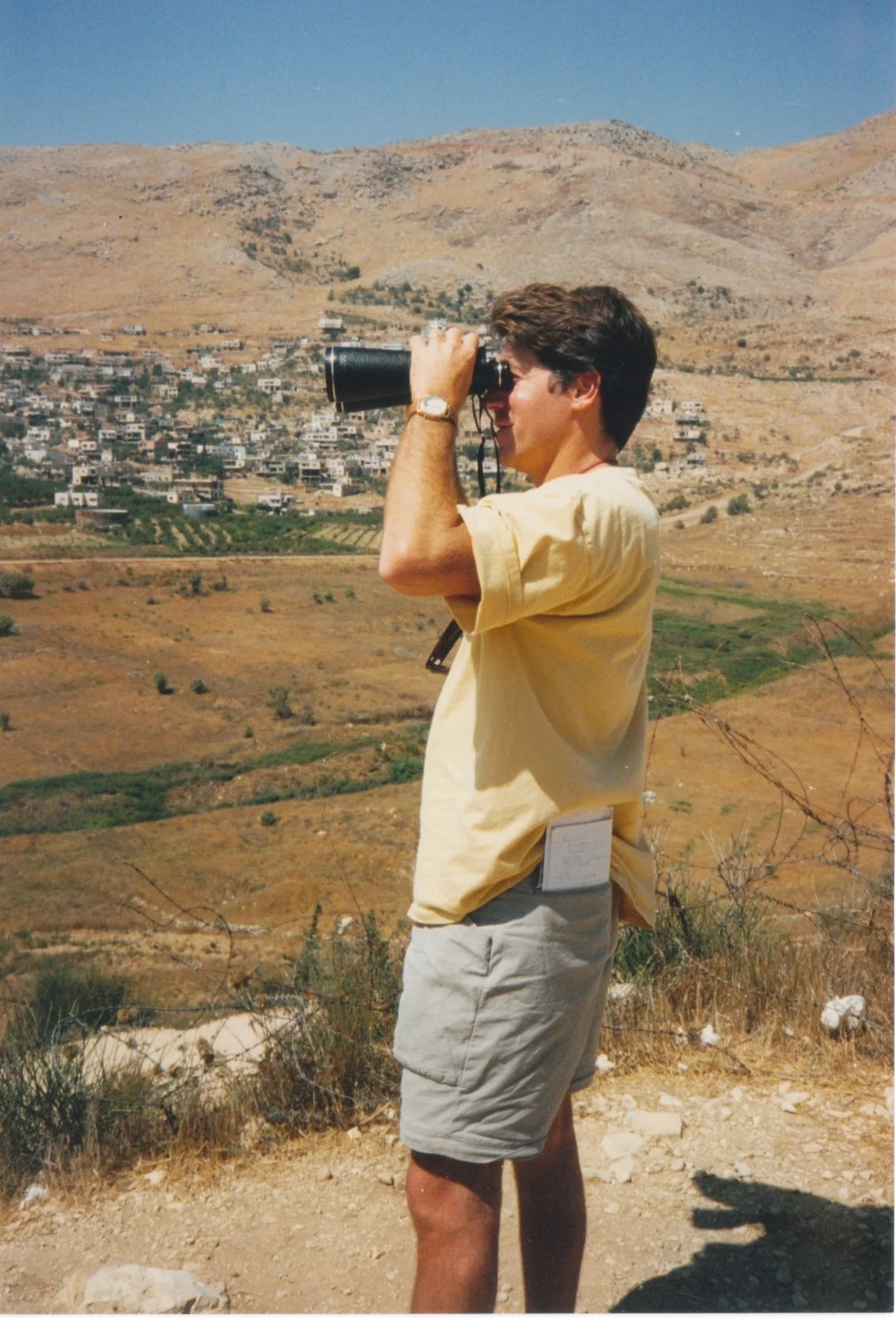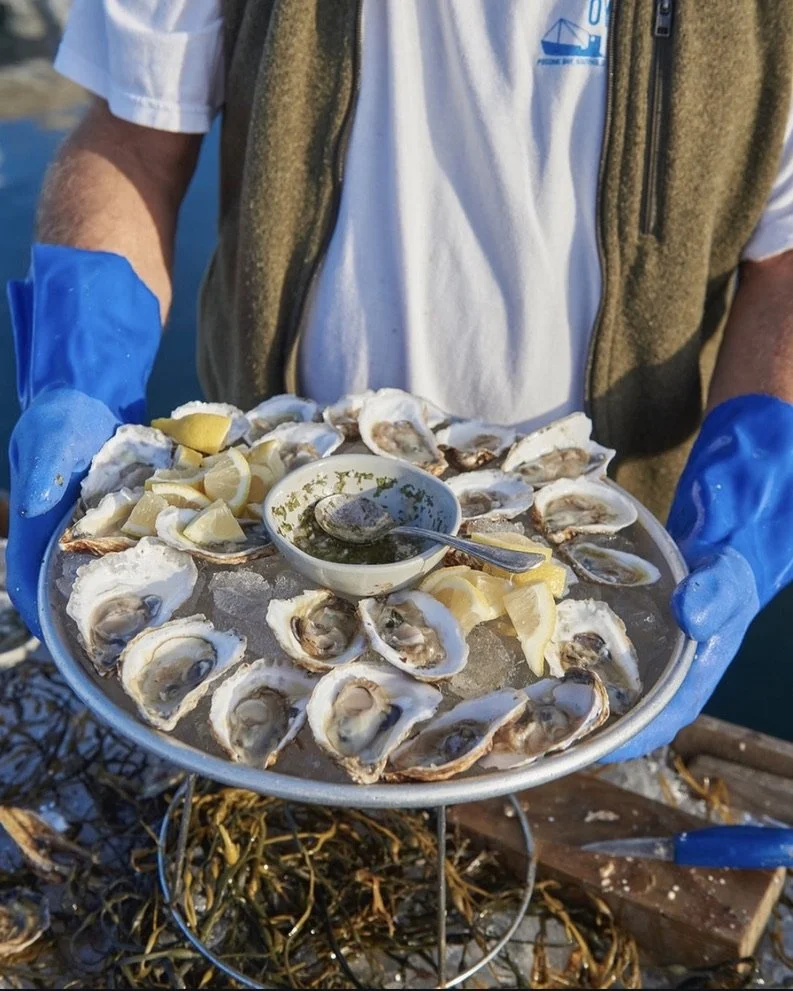On The Half-Shell: A Career Journalist’s Second Act [condensed]
Photo by Felicia LaLomia.
Steve Schnee is an oyster farmer on the East End of Long Island. His aquaculture operation, Founders Oysters, sits just a mile off Founder’s Landing on the Peconic Bay.
This is now his bread and butter, a stark contrast to forty years spent in network television as a field producer. Steve just turned 70 and spends his mornings on the water, dressed in clay-stained Grundéns, braving the winter winds. He traded in his press pass for lined rubber gloves that keep the shells from cutting into his skin. His farm is family-owned-and-operated, mostly by himself. He’s also my dad.
Brooklyn Beginnings
Born to two second-generation Ashkenazi Jews, Steve was raised mostly secular. My dad’s maternal grandparents kept kosher in the home, but on special occasions, they’d go to Lundy’s in Sheepshead Bay for lobster to indulge in treif.
Steve’s dad, a professional violinist with the New York City Ballet Orchestra, played for the Chautauqua Symphony during the summers. There, their children were exposed to the arts and the water, right off Lake Erie. The food was markedly terrible, but Davie’s Fish Fry offered mediocre shellfish on a Friday night. As with so many diasporic secular Jews, the family delighted in all seafood.
Two Young Journalists
Steve on assignment in Syria. Photo provided by Steve Schnee.
After college, Steve got a job as a desk assistant for ABC News and discovered his love for storytelling. He eventually became a field producer in Atlanta covering the Southeastern US, Central America, and South America. In 1982, on assignment in Buenos Aires to cover the Falklands War, he met an Argentine journalism student—my mother. She emigrated a year later, joined the world of TV journalism and they were transferred to the London bureau.
“It was a great opportunity, and time to be a journalist overseas.” Steve kept producing news and my mom freelanced. They were both dedicated to truth-telling, traveling thousands of miles to do it.
They were in Berlin when the wall came down, and Soweto when Nelson Mandela was released from prison. Steve went where the news happened: Sudan during the 1993 famine, Rwanda covering the Genocide, and Baghdad, where his hotel was bombed. He was nominated for three Emmys and won two. Steve knew how essential this work was, but eventually it wore into him.
Finding Joy
In 1997, he was given the opportunity to join news magazine 20/20—and spend more time with his family. They returned to New York, and when ABC downsized almost twenty years later, Steve started freelancing instead. It was clear this chapter was nearing its end.
Reflecting back, Steve said, “It was the greatest run in the world. That was the golden age of journalism: the industry was growing, and people really respected the work. We were telling the truth. It was before it became a business.”
“[It] was the golden age of journalism: the industry was growing, and people really respected the work. We were telling the truth.”
Act Two
Steve’s oysters on the half shell. Photo by Doug Young.
When his last child graduated college (me), Steve’s lifelong interest in the water finally came to fruition. Oyster farming started as a hobby. He’d begun spending more time on the North Fork volunteering at S.P.A.T., Cornell’s Suffolk Project in Aquaculture Training, where he learned the art and science of growing oysters.
Eventually, he mustered the courage to bet on himself and decided to make a go of it through Suffolk County’s lease programs. Steve made his love of the water a full-time gig. He even restored a 1936 Chris Craft to take passengers out for an oyster cruise, where they can eat them fresh from the farm. But it’s really Steve who enjoys it the most. His grandparents would approve: from kosher foods to treif.



